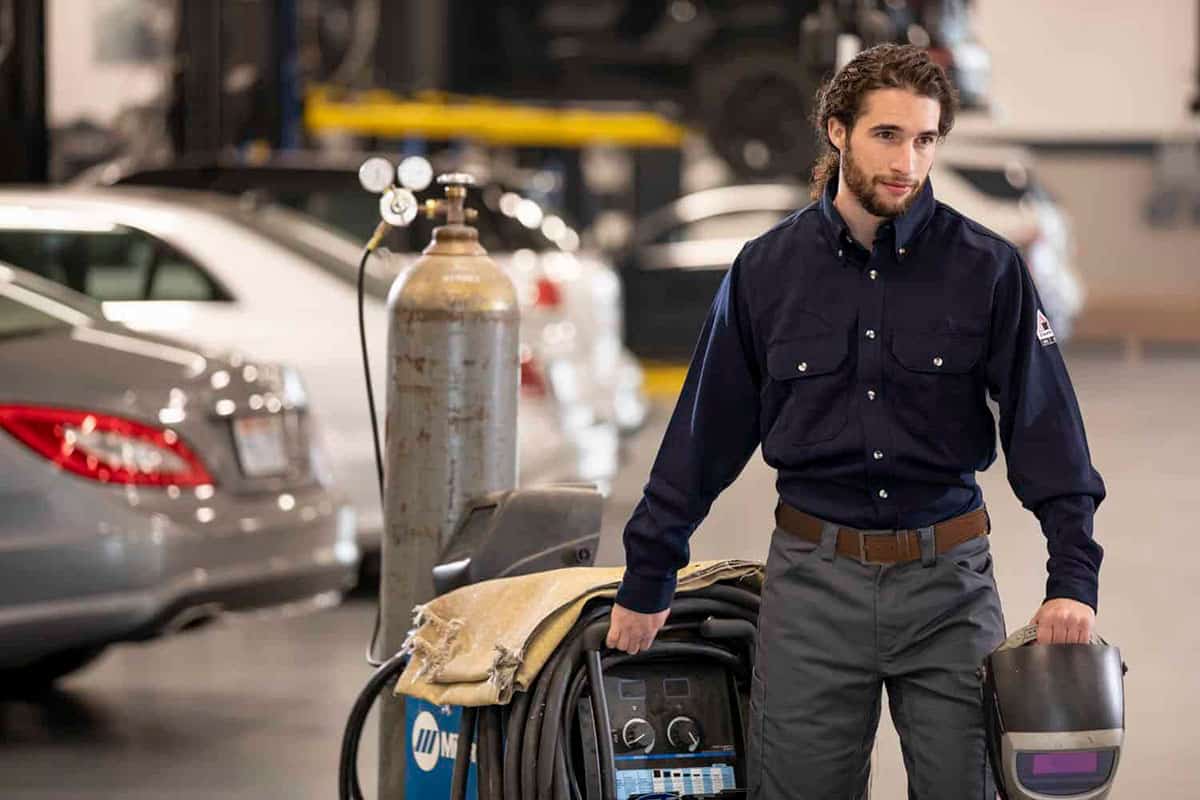
NFPA 70E Clothing: Requirements, Risks and Standards | Alsco
What is NFPA 70E?
The National Fire Protection Association (NFPA) is the leading advocate of fire prevention and source on public safety worldwide. The NFPA’s focus is to minimize the possibility and effects of fire and other risks.
NFPA 70E is the national consensus standard developed to provide protection against electrical hazards in the workplace. This standard is in place to protect employees from the potential energy they could be exposed to in the form of electric arc flashes or blasts. OSHA relies on NFPA 70E standards to provide protection to at-risk employees.
NFPA 70E Clothing
NFPA 70E requires that employees wear arc-rated clothing wherever there is the possibility of exposure to an electric arc above the threshold incident energy level for a second-degree burn.
Arc-rated clothing includes flame-resistant (FR) protective apparel and personal protective equipment (PPE). FR protective apparel is matched with an arc rating that is equal to the hazard level it will protect against or is rated for specific tasks based on incident energy.
The manufacturer is required to obtain and identify the arc rating of each of their products. This arc rating generally appears on the label of all FR protective apparel. Having the arc rating on each piece of PPE maximizes employees’ protection against burn injuries or even death.
Alsco’s FR protective apparel, our NFPA 70E uniforms, form an extensive collection of shirts, pants and coveralls that are comply with NFPA standards and offer dual protection, shielding employees from the risks of flash fire and arc flash. Employers that offer uniforms that meet NFPA 70E requirements simplify compliance and reduce liability.
Industries Affected by the Standards of 70E
NFPA 70E requirements must be followed wherever electrical construction and maintenance work take place, such as construction sites and industrial plants. Contractors, electrical engineers, electrical inspectors, HVAC installers and safety managers are a few examples of the workers who need to follow the requirements of 70E.
NFPA 70E clothing must be worn to ensure the safety of employees working on any electrical installation, maintenance, operation or demolition of electrical conductors.
Industries excluded from NFPA 70E include the following:
Electric utility transmission
Distribution and generation workers covered by OSHA 1910.269
Marine, railway rolling stock and mining industries
Although these industries may be excluded from the requirement to comply with NFPA 70E, many still choose to protect workers with FR clothing.
Compliance with NFPA 70E and OSHA
The areas of compliance with NFPA 70E include the following:
Establish Safe Working Conditions
Arc Flash Hazard Risk Assessment
Determine and Select Appropriate PPE
Safety Training Implementation and Documentation
Complying with OSHA and NFPA regulations limits the potential liability of costly accidents for your company and provides peace of mind in knowing your employees are protected. Using NFPA 70E standards ensures employees are protected in the proper flame-resistant clothing and personal protective equipment.
Everyday uniform programs offer a way for companies to simplify compliance with NFPA 70E. Employers are required to provide clothing that is appropriate for the potential energy of a hazard.
Finding this potential is done by performing an arc flash hazard analysis or flash risk assessment. The employer is required to perform this assessment to estimate the likelihood of an injury occurring, along with the potential severity of that injury.
Once an assessment has been completed, employers must then decide on whether additional protective measures are required, including the use of PPE. Risk levels of PPE are divided into four separate categories based on energy incident analysis.
Risk Category Levels
Each of the four risk category levels include the minimum arc rating value for the required PPE. Each level is used to assess the risk of a given job and the arc rating needed to provide protection in the clothing worn. The levels are based on specific job tasks and range from low risk (category 1) to high risk (category 4).
Categories 1 and 2 are both listed as single layer. It is common for companies with a category 1 risk to opt for category 2 coverage, which will prevent the employee from having to decide whether category 1 is sufficient.
In some cases, multiple layers of clothing may be necessary to meet the required rating of a specific job. Categories 3 and 4 require additional layers of PPE, such as arc flash suits and hoods with two layers. These two categories pose the most risk based on the arc rating value and therefore require the most protection and coverage.
Alsco and NFPA 70E
Alsco offers the protection your employees deserve. The risks, requirements and standards laid out by NFPA can be easily addressed with our FR apparel rental products.
Simplify compliance with NFPA 70E standards with Alsco’s selection of FR uniforms and PPE that are certified and compliant with the following National Fire Protection Association (NFPA) standards:
NFPA 2112-2012: Standard on Flame-Resistant Garments for Protection of Industrial Personnel Against Flash Fire
NFPA 70E-2015: Standard for Electrical Safety in the Workplace
